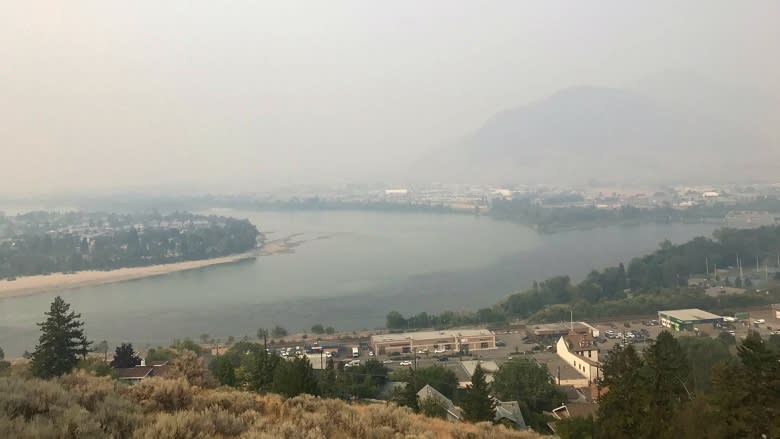Interior B.C. needs better air quality monitoring during wildfires: Kamloops doctors
A group of Kamloops, B.C. doctors is calling on the province to make major changes to the way air quality is measured during periods of heavy smoke, and says the current system is failing to keep people safe.
Kamloops Physicians for a Healthy Environment conducted a real-time survey of 641 residents during some of the smokiest conditions the city experienced during the 2017 wildfire season.
It found that residents were forced to make significant lifestyle changes in response to the reduced air quality, and were not provided with up-to-date information because the Air Quality Health Index (AQHI) doesn't suit the region's needs.
For example, last August, when the air quality deteriorated, residents said they were forced to miss work, avoid outdoor recreation and use medications such as inhalers more frequently.
"The AQHI is not sensitive enough to the high concentrations of particulates that a city like Kamloops experiences when there are the wildfires we had," said Robert Schemenauer, a retired research scientist formerly with Environment Canada.
Calls for face masks and safe public spaces
The AQHI ratings come from Environment Canada and are based on a three-hour average of levels of many substances including nitrogen dioxide, sulphur dioxide, ozone and particulates smaller than 2.5 microns in diameter, also known as PM 2.5.
Those fine particulates are the main concern for doctors because they are small enough to go deep into the lungs and the bloodstream.
"You're looking at not just respiratory problems but you're also looking at cardiovascular problems, possibly increased incidences of some types of cancer and even possibly genetic effects get carried on from generation to generation," said Schemenauer.
Unlike urban areas such as Vancouver, Kamloops air does not often see high concentrations of nitrogen or sulphur dioxide and the AQHI rating often lags behind, showing low levels of risk despite high levels of PM 2.5, according to Schemenauer.
"The biggest failing of our system was the notification of the public around how severe our air quality was impaired and the air quality health index lagging behind so badly," said Dr. Jill Calder who worked on the survey and resulting report.
Calder would like to see the province report hourly particulate levels to the public when smoke is present. This data is already gathered at monitoring stations across the province.
The group is also calling on the Ministry of Environment and the Ministry of Health to work together to develop an emergency response plan that would provide face masks and public spaces with high-quality air filters to people in smoky areas.



